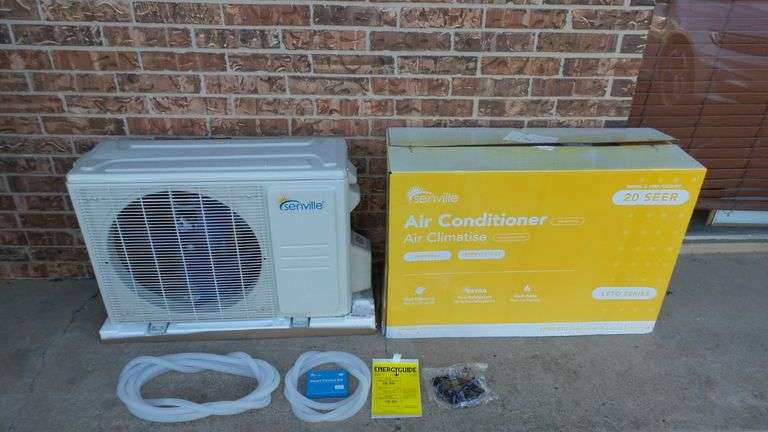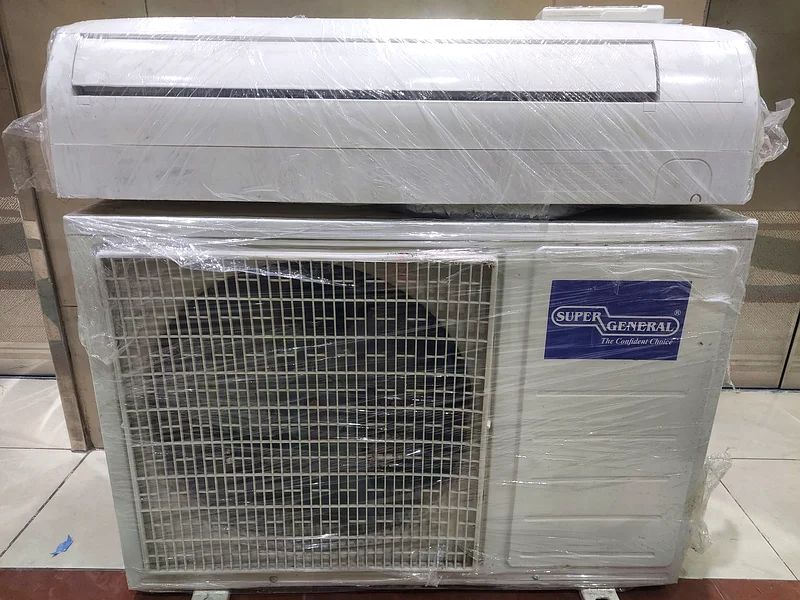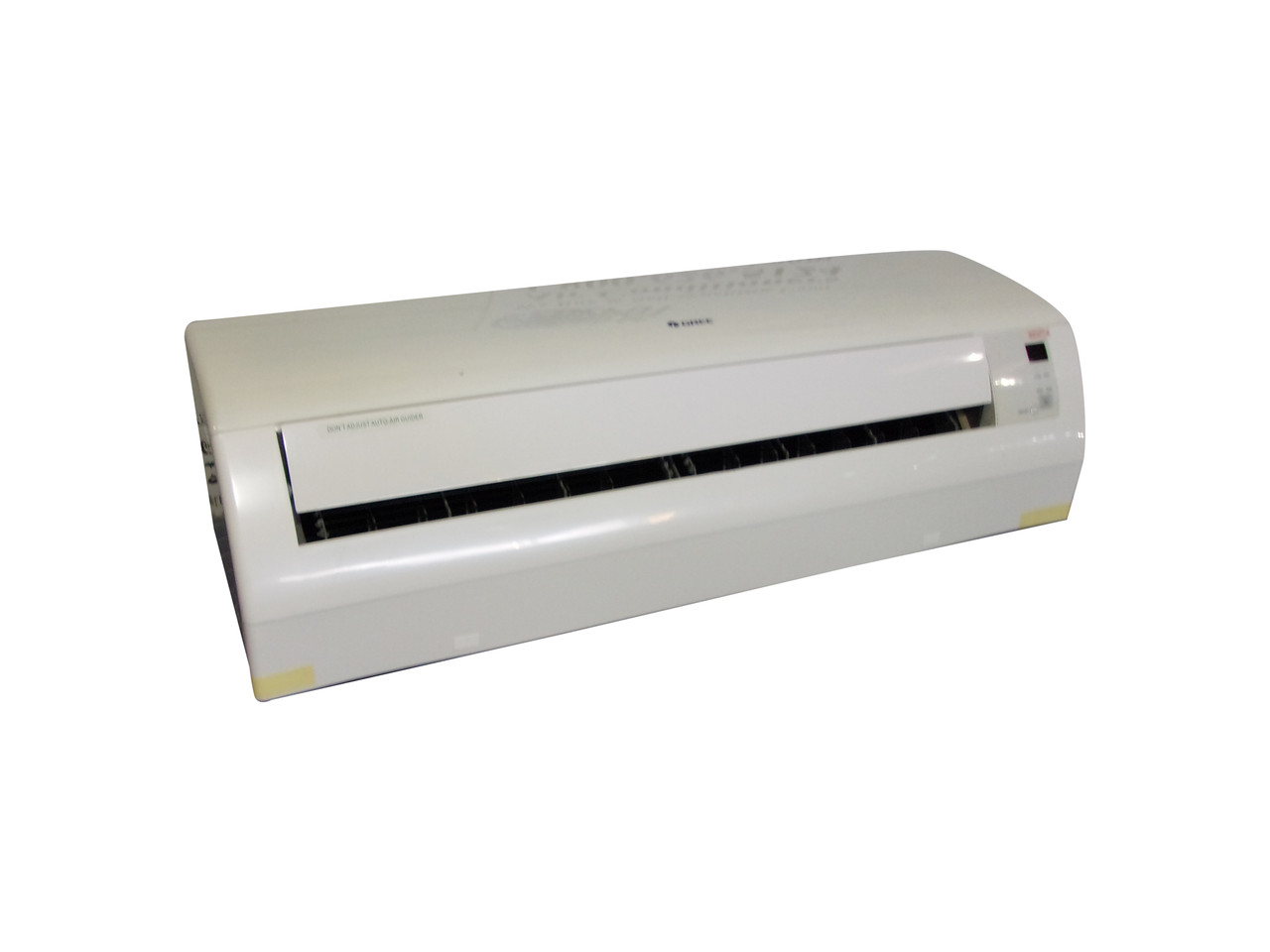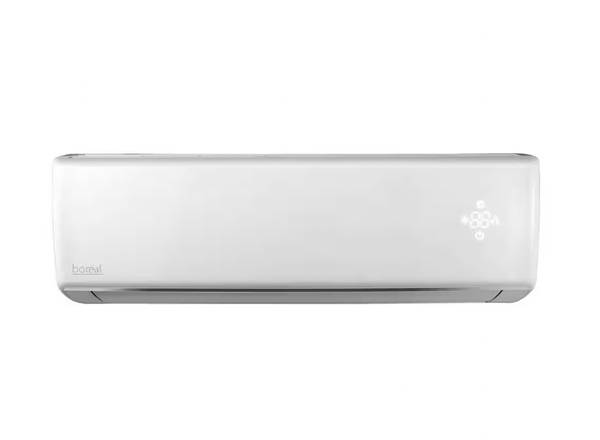Used Mini Split Air Conditioner For Sale

Considering a used mini split air conditioner? You're not alone. Many homeowners and businesses are exploring pre-owned options to cut costs on energy-efficient heating and cooling. Ductless mini-split systems offer numerous advantages, from zoned temperature control to significant energy savings, making them a compelling alternative to traditional HVAC systems. But is buying used the right choice? Let's delve into the pros, cons, and everything you need to know before investing in a used mini-split.
Understanding Mini Split Air Conditioners and Their Energy Efficiency
Mini-split systems, also known as ductless air conditioners, consist of two main components: an outdoor compressor/condenser and one or more indoor air-handling units. These units are connected by refrigerant lines and electrical wiring, eliminating the need for extensive ductwork. This ductless design is key to their energy efficiency, as it eliminates the energy losses that can occur through leaky ducts in traditional systems. According to the Environmental Protection Agency (EPA), duct losses can account for more than 30% of energy consumption for space conditioning, particularly in older homes.
Newer mini-split systems often boast impressive Seasonal Energy Efficiency Ratio (SEER) ratings, often exceeding 20 SEER, and Heating Seasonal Performance Factor (HSPF) ratings, surpassing 10 HSPF. These ratings indicate their energy efficiency during cooling and heating modes, respectively. Energy Star certified models are particularly attractive as they meet strict energy performance criteria set by the EPA. However, understanding these metrics and what to look for in a used system is critical.
The Appeal of Used Mini Splits: Cost Savings and Sustainability
The primary driver for considering a used mini-split is cost. A new high-efficiency mini-split system, while offering long-term energy savings, can represent a significant upfront investment. Purchasing a used unit can dramatically reduce this initial expenditure. In some cases, you might find a used system for 50% or even 70% of the cost of a new one.
Beyond cost, there's also an environmental appeal. Reusing a functional appliance contributes to a circular economy, reducing waste and minimizing the demand for new manufacturing processes. By giving a used mini-split a second life, you're contributing to a more sustainable approach to HVAC.
Potential Drawbacks and Risks Associated with Used Mini Splits
While the allure of cost savings is strong, it's crucial to acknowledge the potential downsides of buying used.
Warranty Issues
Most manufacturers' warranties are non-transferable. This means that if the used mini-split fails, you're unlikely to have recourse to the original manufacturer's warranty coverage. This absence of warranty protection can expose you to potentially expensive repair costs. Always inquire about any remaining warranty coverage, even if partial, before making a purchase.
Unknown History and Condition
The history of a used mini-split can be murky. You may not know how well the unit was maintained, whether it was subjected to excessive use, or if it has undergone any prior repairs. A poorly maintained unit might have reduced efficiency, a shorter lifespan, or hidden problems that will surface later.
Refrigerant Concerns
Refrigerant leaks are a common issue in HVAC systems. If the used mini-split has a history of leaks or requires refrigerant replacement, it could indicate underlying problems or the use of older, less efficient refrigerant types that may be phased out in the future due to environmental regulations. R-22 refrigerant, for example, is being phased out, and replacing it can be costly.
Compatibility and Installation Challenges
Ensuring the used mini-split is compatible with your home's electrical system and physical space is crucial. Improper installation can significantly impact its efficiency and lifespan. You'll likely need to hire a qualified HVAC technician for installation, adding to the overall cost. Older models may lack compatibility with newer smart thermostats and sensor technologies.
Due Diligence: What to Check Before Buying a Used Mini Split
If you're determined to pursue a used mini-split, thorough due diligence is essential to mitigate the risks. Here's a comprehensive checklist:
- Visual Inspection: Examine both the indoor and outdoor units for signs of damage, rust, or corrosion. Check the fins on the condenser for damage or blockage.
- Operational Testing: If possible, observe the unit in operation. Listen for unusual noises or vibrations. Ensure the unit cools or heats effectively and that the fan operates smoothly.
- Refrigerant Check: Ask the seller if the unit has ever required refrigerant refills. A history of frequent refills suggests a leak.
- SEER and HSPF Ratings: Verify the SEER and HSPF ratings of the unit. Compare these ratings to current Energy Star standards to assess its efficiency. Note that older models might have significantly lower ratings than newer ones.
- Age and Usage: Inquire about the age of the unit and its usage history. A newer unit with light usage is generally a safer bet.
- Professional Inspection: Ideally, have a qualified HVAC technician inspect the unit before you buy it. This will provide a more objective assessment of its condition and potential problems.
- Seller Reputation: If buying from an individual, check their reputation and ask for references. If buying from a used appliance dealer, ensure they have a good track record.
Installation Considerations for Used Mini Splits
Proper installation is paramount for any mini-split system, but it's even more critical for used units. Hire a licensed and experienced HVAC technician to handle the installation. They can ensure the unit is properly connected, charged with the correct refrigerant, and that the system is operating at optimal efficiency.
Consider these installation-related factors:
- Electrical Capacity: Ensure your home's electrical system can handle the power requirements of the mini-split.
- Location: Choose a suitable location for both the indoor and outdoor units. The outdoor unit should be easily accessible for maintenance and away from obstructions.
- Refrigerant Lines: The refrigerant lines must be properly sized and insulated to prevent energy loss.
- Drainage: The indoor unit requires proper drainage to remove condensation.
- Permits and Regulations: Check local building codes and regulations regarding mini-split installations.
Smart Home Integration and Used Mini Splits
Many modern mini-split systems offer smart home integration, allowing you to control them remotely via smartphone apps, voice assistants like Amazon Alexa or Google Assistant, and smart thermostats. This integration enhances convenience and allows for more precise temperature control, leading to further energy savings. However, compatibility with smart home devices can be a challenge with older, used models.
Before purchasing a used mini-split with smart capabilities, verify that it's compatible with your existing smart home ecosystem. Check if it supports the same communication protocols (e.g., Wi-Fi, Zigbee, Z-Wave) and that the manufacturer still provides software updates for the device.
Financial Incentives and Rebates
Even for used mini-split systems, you might be eligible for certain energy efficiency rebates or tax credits. Check with your local utility company, state energy office, and the federal government (through programs like the Inflation Reduction Act) to see if any incentives apply. These incentives can help offset the initial cost of the system and make it a more attractive investment.
Making an Informed Decision: Is a Used Mini Split Right for You?
Purchasing a used mini-split air conditioner can be a cost-effective way to improve your home's comfort and energy efficiency. However, it's essential to weigh the potential benefits against the risks. If you're on a tight budget and are willing to invest the time and effort to thoroughly inspect and verify the unit's condition, a used mini-split might be a viable option.
However, if you prioritize warranty protection, peace of mind, and the latest technology, a new mini-split system is likely a better choice. A new unit will offer greater efficiency, a longer lifespan, and the latest features, including smart home integration and advanced energy-saving modes.
Ultimately, the decision of whether to buy a used or new mini-split depends on your individual circumstances, budget, and risk tolerance. By carefully considering the factors outlined in this article, you can make an informed decision that aligns with your needs and goals.
Alternatives to Buying Used: Exploring Refurbished or Open-Box Options
If you're hesitant about the risks of buying a used mini-split from a private seller, consider exploring refurbished or open-box options from reputable retailers or manufacturers. Refurbished units have typically been returned to the manufacturer, inspected, repaired if necessary, and re-certified for sale. Open-box units are typically products that have been returned unused, often due to a change of mind by the original buyer.
Refurbished and open-box mini-splits often come with a limited warranty, providing some level of protection against defects. They are also typically priced lower than new units, offering a balance between cost savings and peace of mind. Always carefully review the warranty terms and return policy before purchasing a refurbished or open-box unit.









